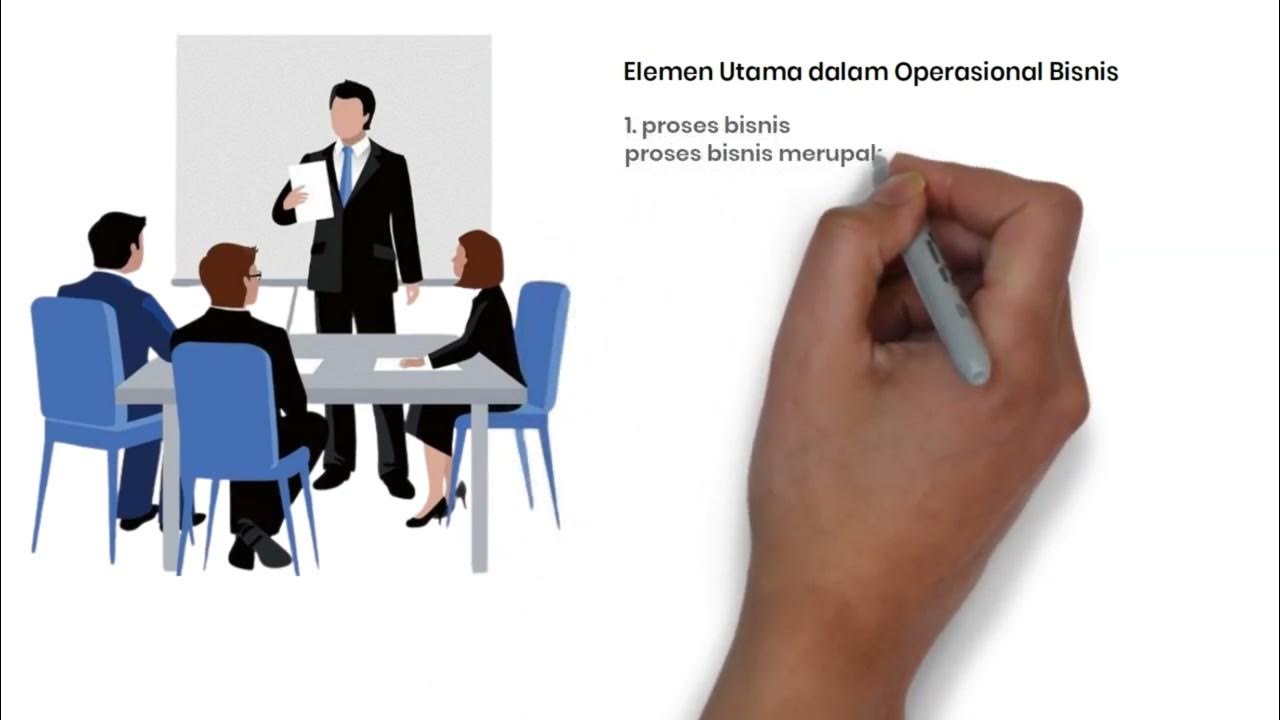Culture's Impact on Business
Summary
TLDRThis lecture explores how culture significantly influences business operations, from daily activities to negotiations. It uses the example of 'Big John,' a typical businessperson, to illustrate cultural impacts throughout his workday. Key cultural aspects affecting business include time perception, spatial interactions, communication styles, nonverbal cues, business etiquette, leadership styles, and employee expectations. Understanding these cultural nuances is crucial for conducting successful business in any country.
Takeaways
- 🌐 Culture significantly influences business operations, affecting daily activities, negotiations, and meetings.
- ⏰ Time perception varies across cultures, with some being monochronic (linear and sequential) and others polychronic (flexible and simultaneous).
- 🤝 Spatial perception and physical contact norms differ, impacting how people interact in business settings.
- 🗣️ Communication styles, including verbal and nonverbal cues, are shaped by cultural contexts, affecting business interactions.
- 🤝 Business etiquette, including greetings and meeting conduct, is culturally defined and crucial for international business.
- 👩💼 Leadership styles are culturally influenced, with different effectiveness in various cultural settings.
- 🎯 Goals and incentives in business are tied to cultural values, with some cultures prioritizing the outcome over the process.
- 🕒 Employee expectations regarding work hours and after-hours work are influenced by cultural norms.
- 🍽️ Cultural practices, such as business lunches, can affect how business is conducted and relationships are built.
- 🧐 Understanding cultural impacts is essential for foreign businesses looking to expand into new markets.
Q & A
What is the main focus of the lecture on culture and business?
-The lecture focuses on how culture impacts the business environment, operations, and daily business activities, including negotiations and meetings.
What is the purpose of understanding a regular business day in the context of this lecture?
-Understanding a regular business day helps to fully comprehend how culture permeates and affects various business activities.
How does the example of 'Big John' illustrate the impact of culture on a business day?
-Big John's daily routine, including interactions, meetings, and lunch with a client, showcases various cultural impacts such as time perception, spatial perception, communication, and business etiquette.
What are monochronic and polychronic cultures in terms of time perception?
-Monochronic cultures perceive time as linear and sequential, focusing on planning one thing at a time, while polychronic cultures view time as involving many things happening simultaneously, with flexible schedules.
How does spatial perception impact business activities?
-Spatial perception affects how close individuals interact, the norms around physical contact, and greetings such as handshakes, which can vary significantly across cultures.
Why is understanding nonverbal communication important in a business context?
-Nonverbal communication, including eye contact and body language, plays a significant role in how people conduct themselves and interact with each other in business settings.
What is the role of business etiquette in conducting business across cultures?
-Business etiquette, which includes behaviors during meetings, appropriate topics of conversation, and gift-giving, varies by culture and is essential for successful business interactions.
How does culture influence leadership styles in business?
-Leadership styles are often shaped by cultural characteristics, and what is effective in one culture may not be in another, such as authoritative vs. laid-back leadership.
What are some cultural factors that affect employee expectations and incentives?
-Cultural factors influence how goals are achieved, the importance placed on the end goal versus the process, and the types of incentives that motivate employees, such as money, honor, or respect.
How does the concept of a 'siesta' illustrate cultural differences in work expectations?
-The concept of a 'siesta,' a mid-afternoon break common in some cultures, highlights how work hours and expectations can differ significantly across cultures.
What is the final takeaway from the lecture regarding the impact of culture on business?
-The lecture concludes that culture has a profound impact on how people conduct business, how businesses operate, and how countries engage in commerce, emphasizing the importance of understanding cultural nuances.
Outlines

Esta sección está disponible solo para usuarios con suscripción. Por favor, mejora tu plan para acceder a esta parte.
Mejorar ahoraMindmap

Esta sección está disponible solo para usuarios con suscripción. Por favor, mejora tu plan para acceder a esta parte.
Mejorar ahoraKeywords

Esta sección está disponible solo para usuarios con suscripción. Por favor, mejora tu plan para acceder a esta parte.
Mejorar ahoraHighlights

Esta sección está disponible solo para usuarios con suscripción. Por favor, mejora tu plan para acceder a esta parte.
Mejorar ahoraTranscripts

Esta sección está disponible solo para usuarios con suscripción. Por favor, mejora tu plan para acceder a esta parte.
Mejorar ahoraVer Más Videos Relacionados

What do Operations Managers Do? | Career decisions for an ops job

Digital Operation Bisnis Digital (SMK Kelas XI dan XII)

#7 Sistem Informasi Akutansi & Keuangan - Pertemuan 7 | Sistem Pemrosesan Transaksi SIA

Pertemuan 6 - Pengantar Corporate Communication - Muhammad Nur Ichsan, S.I.Kom., M.I.Kom

Sistem Informasi Bisnis (E-Business) | Anshar Akil

Startup CEO: Role of a CEO
5.0 / 5 (0 votes)
